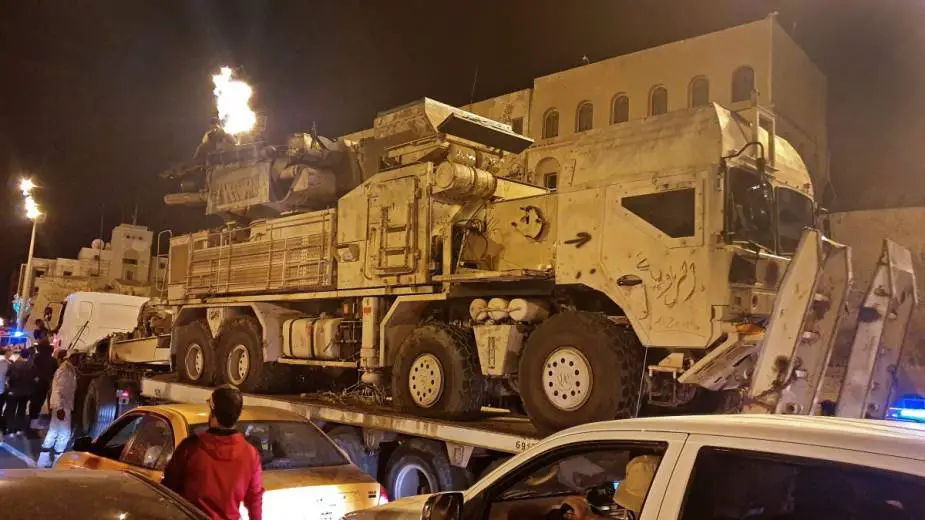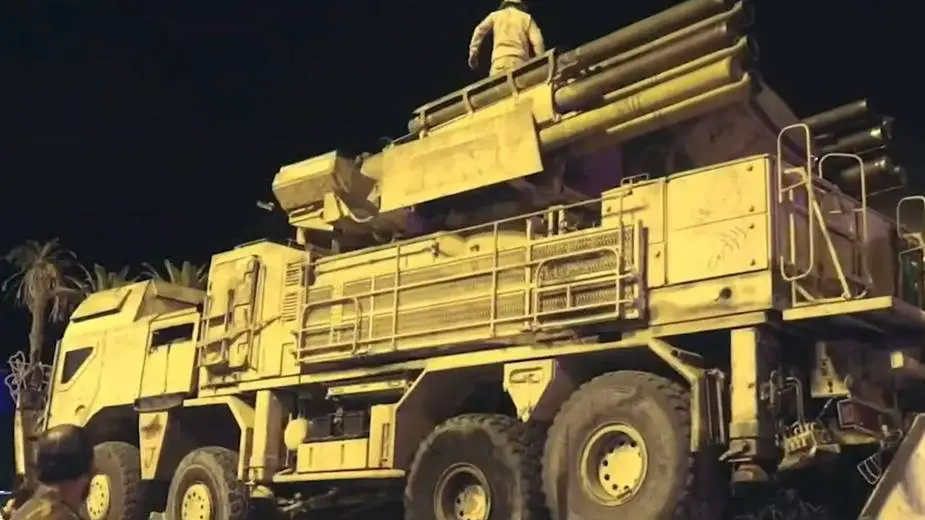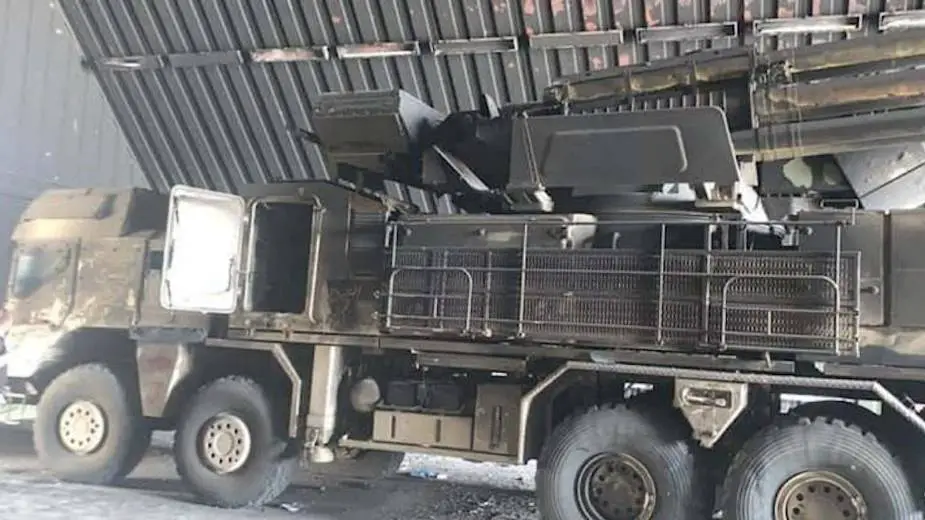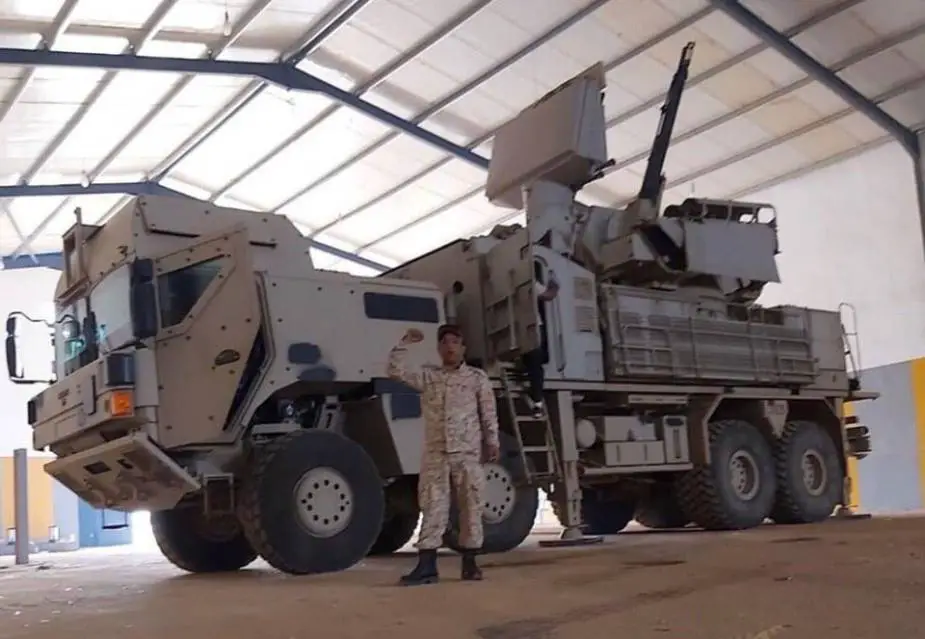"The fall of a Russian Pantsir-S1 air-defence gun-missile system into U.S. hands is terrible news and a negative fact for Russia, but it is not a tragedy". This statement is of the Deputy Chairman of the Russian Academy of Military Sciences, Sergey Modestov, Bulgarian Military reports.
Follow Army Recognition on Google News at this link

The captured Pantsir-S1 in Libya before shipment to Ramstein Air Base in Germany (Picture source: Twitter account of Tango III's Military News @IiiTango)
This Pantsir-S1 was captured on the Libyan battlefield from forces aligned with marshal Khalifa Haftar. The Times was first to report the covert mission set up to recover it, which it said took place in June 2020. A U.S. Air Force C-17A Globemaster III transport aircraft is said to have flown to Zuwarah International Airport, situated to the west of Tripoli, to pick up the Pantsir-S1, which it then flew to Ramstein Air Base in Germany.

The captured Pantsir-S1 in Libya before shipment to Ramstein Air Base in Germany (Picture source: screenshot from Youtube)
In fact, the C-17A that carried the Pantsir first left Joint Base Charleston in South Carolina for Ramstein just days after the GNA captured Al Watiya in May 2020. That aircraft subsequently made multiple trips to and from Libya, with at least one additional apparent stop in Turkey, in the first week of June. It then returned to Charleston on June 7, 2020, The Drive reports.
Forces under the direction of GNA Interior Minister Fathi Bashagha had already wrestled the Pantsir-S1 from the hands of Mohamed Bahroun, a GNA-aligned militia commander who also goes by the nomme du guerre "the Rat," after Bahroun's group initially captured it, according to The Times. It was then reportedly moved to a base hosting Turkish forces before being sent for pickup at Zuwarah. Bahroun has reported connections to arms smugglers and Islamist militant groups in Libya.
It's not clear exactly what model of Pantsir-S1 was reportedly recovered, The Drive writes. Haftar's Libyan National Army (LNA) received a number of these systems by way of the United Arab Emirates (UAE), which purchased a distinct version that uses German-made 8x8 MAN SX truck chassis. Pictures had also emerged last year reportedly showing examples of the standard Russian type, which uses an 8x8 KAMAZ-6560 truck chassis, and is also the primary export configuration, in service with the LNA.

Pantsir captured at Al Watya air base (Picture source: Twitter)
The Russians are not tragic about the situation: they consider that, since this is an export version of the product, it is quite “crippled” in technology. “War is War. There are trophies. It happens that we get something too,” philosophically added Aiteh Bizhev, a retired Russian lieutenant general. "Export versions, such as the one captured in Libya, are supposedly stripped of a carefully guarded identification friend or foe database with the transponder codes for all Russian air force jets", according to Military News @IiiTango).

Pantsir in air base (Twitter account of Harry Boone @Towersight)
The Pantsir (Carapace) missile system is a family of self-propelled, medium-range surface-to-air missile and anti-aircraft artillery systems. Starting with the Pantsir-S1 as the first version, it is produced by KBP Instrument Design Bureau of Tula, Russia. The system is a further development of 2K22 Tunguska (NATO reporting name: SA-19/SA-N-11) and uses phased array radars for both target acquisition and tracking. The Pantsir-S1 was designed to provide air defence of military, industrial and administrative installations against aircraft, helicopters, precision munitions, cruise missiles and UAVs; and to provide additional protection to air defence units against enemy air attacks employing precision munitions, especially at low to extremely low altitudes.















